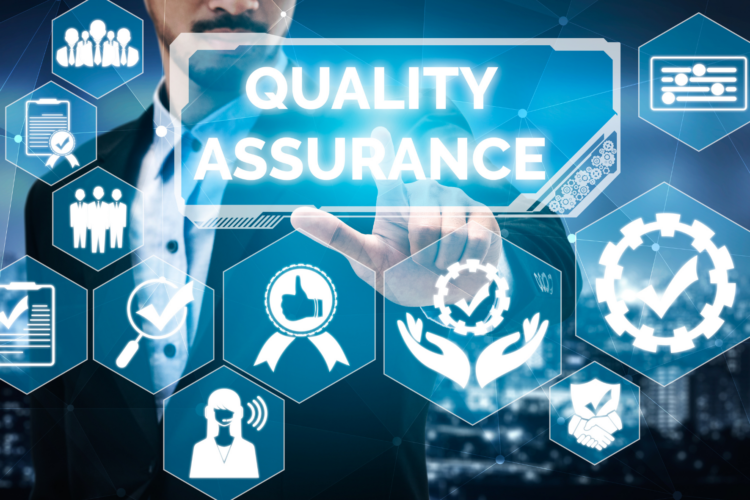Imagine a world where groundbreaking apps and software seamlessly come to life every single day. Any resemblance to reality is not a pure coincidence but rather the result of using the software development life cycle phases.
From the moment inspiration strikes to the exhilarating climax of successfully deploying an application and presenting it to the world, these phases traverse every single step of the way.
Whether you’re the head of a startup, the top executive of an IT firm, or hold a high-ranking position in software engineering, mastering the software development life cycle (SDLC) and its phases is crucial. Understanding its significance can help CEOs, CTOs, and VP of engineering elevate their businesses to new heights. Let’s see why.
What is software development life cycle?

Put simply, the SDLC is a structured process that outlines the stages and activities involved in developing software applications.
It’s a guide, framework, or systematic approach for managing software projects, ensuring they are completed efficiently, on time, and within budget. In other words, it is a compass for software development teams to navigate the roaring and ever-changing seas of the industry.
The SDLC is the gold standard in the software business because it helps developers, project managers, and clients —in short, all stakeholders— understand the various phases and their interdependencies throughout the development process.
Its benefits include improved project management, enhanced quality control, efficient resource allocation, better risk management, increased collaboration, and a structured approach to software development.
The 5 phases of the software development life cycle

The SDLC concept has well-defined phases or steps, but there is not a definitive list of them. The stages of software development life cycle are usually divided into five or six, and they include all the activities related to planning and design, development, testing, implementation, and maintenance.
Each phase has specific objectives, deliverables, and activities that contribute to the overall success of the software project.
Phase 1: Planning
If you fail to plan, you are planning to fail. This famous quote can’t be more true than in the ultra-competitive high-paced software industry. The planning phase is the cornerstone of the other software development life cycle phases.
During this stage, you must carefully plan and organize your project. Some of the key activities involved in the planning are:
- Conducting economic, operational, and technical feasibility studies.
- Creating a project plan.
- Determining resource allocation.
- Identifying potential risks.
- Defining product requirements through a Software Requirement Specification (SRS) document.
Overall, the planning phase sets the direction and establishes a solid framework for the subsequent stages of the software development process.
Phase 2: Designing of the architecture
Once you or your team have a solid plan, it’s time to design the product architecture. This involves crafting a software design specification document (SDD) that outlines or implies all the following:
- Selecting technology that ensures compatibility, scalability, and cost-effectiveness.
- Creating prototypes for all stakeholders to use and provide feedback.
- Designing the software architecture and defining components, modules, and interfaces.
- Creating and maintaining relevant documents such as requirements, specifications, and plans.
The primary objective of this phase is to create a detailed blueprint that guides the implementation and development of the software product in the subsequent steps.
Phase 3: Building and testing the product
Now is the time to get your hands dirty. During the third phase, the software product is built based on the established requirements and design specifications.
This is the most known phase and the easiest to identify as “software development,” as it consists of coding, integrating components, creating databases, handling errors, etc. By the end of this phase, you’ll have a fully functional software product ready for testing.
The testing is crucial for identifying defects, validating functionality, and ensuring software quality and reliability. It aims to deliver a stable and reliable software product by uncovering weaknesses, validating functionality, and meeting quality standards.
Phase 4: Implementation
The implementation phase of software development life cycle focuses on deploying the software product into the production environment for actual use by end-users.
Key aspects of this stage include:
- Deployment planning.
- Infrastructure setup.
- Installation and configuration.
- Data migration.
- User training and documentation.
Successful implementation leads to the availability of the software for end-users, marking the transition from development activities to actual usage.
Once here, don’t hesitate to pop a bottle of champagne and celebrate with your team. You truly deserve it!
Phase 5: Maintenance
When a product is finally alive, software developers just gather all their desktop-Funkos on a cardboard box and move to the next project, right? Well, not exactly.
Once the product is deployed, the maintenance phase of software development life cycle begins to —hopefully— never end. To keep your software alive, you must continuously fix errors, add new features, and update it to be compatible with the latest technologies.
The maintenance phase is crucial for addressing defects, improving, and accommodating changing user needs. Maintaining the software is critical to extending its lifespan, enhancing its value, and providing an optimal user experience while staying aligned with evolving requirements and technologies.
Different software development life cycle models

The software development life cycle phases are generic and represent a high-level overview of typical activities involved in software development.
But you need specific approaches and strategies to organize and execute these phases. These are the all-famous software development life cycle models. Each suggests a particular sequence, emphasis on specific activities, and level of iteration or flexibility.
While the popularity and usage of SDLC models may vary, the following are widely recognized and extensively used:
- Waterfall model: It is a linear and sequential procedure. It consists of the already mentioned phases, from planning to maintenance, executed in a strict order. Progress flows downwards like a waterfall.
- V-Shaped model: An extension of the waterfall model that emphasizes testing and verification at each stage of the development process. It aligns testing activities with the corresponding development phases, forming a “V” shape.
- Iterative model: This is a strategy that divides the project into iterations. Each iteration involves planning, designing, building, and testing. It allows flexibility, continuous feedback, and incremental delivery.
- Spiral model: Combines elements of the waterfall and iterative models. It follows a risk-driven approach, with each iteration called a spiral. The model involves identifying risks, developing prototypes, evaluating and refining them based on feedback, and repeating the process until the software is completed.
- Big Bang model: This is a simplistic approach where the entire project is developed and implemented at once without following specific phases or structured processes. It lacks formal planning and relies on immediate feedback, making it suitable for small-scale projects or experimental applications.
But of all models, Agile deserves to be mentioned apart as it is by far the most used worldwide.
The Agile model, including methodologies such as Scrum and Kanban, prioritizes iterative and incremental development. The Agile model emphasizes collaboration, flexibility, and adaptive planning. It divides the project into small iterations called sprints, allowing for continuous feedback, frequent releases, and adaptability to changing requirements.
What is the difference between SDLC and Agile?
SDLC is a structured and sequential process that follows predefined phases. Instead, Agile is an iterative and flexible approach that emphasizes collaboration, adaptability, and continuous delivery. SDLC focuses on thorough planning and documentation, while Agile prioritizes customer feedback, frequent iterations, and incremental development.
Conclusion
From the initial spark of inspiration to the final lines of code, the SDLC provides a reliable and proven framework to guide you through creating exceptional software solutions.
By inspiring adequate planning, meticulous designing, efficient coding, rigorous testing, optimal implementation, and continuous maintenance, the software development life cycle phases empower you to turn your software dreams into tangible triumphs.
Keep reading our blog for more about software development.











